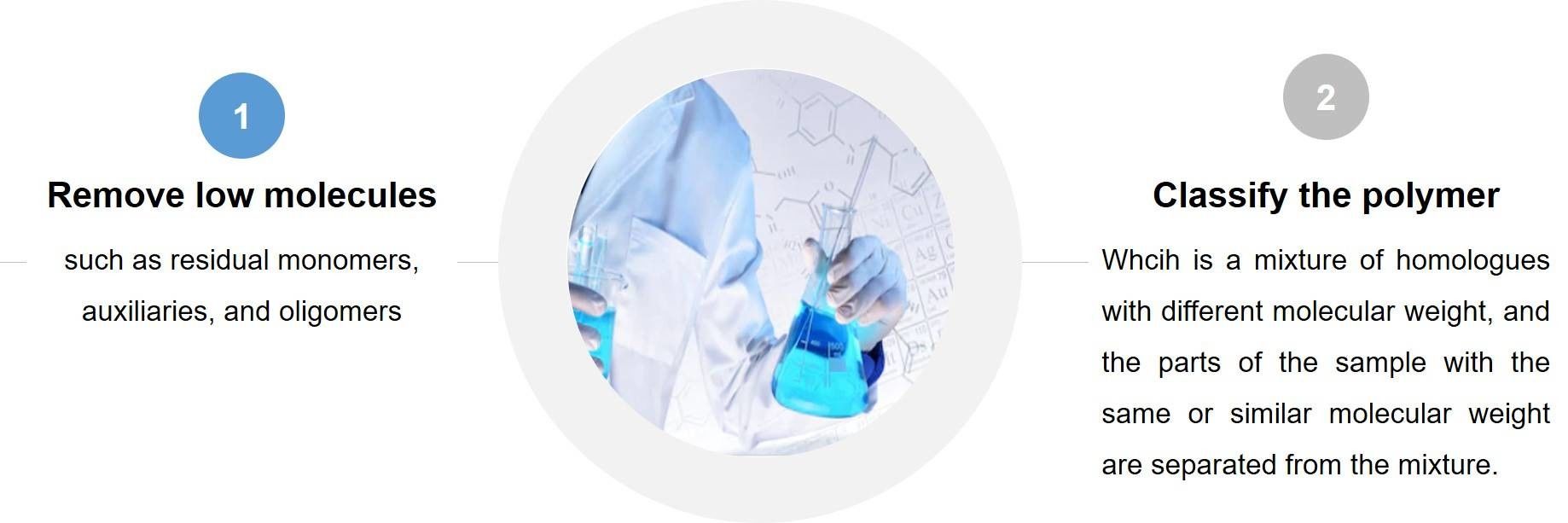Polymer Isolation and Purification
Polymer purification is critical for accurately analyzing and characterizing polymers because impurities can greatly affect their mechanical, electrical, and optical properties. On the other hand, even a small amount of impurities can cause accelerated degradation or cross-linking reaction of the polymer.
Polymer Isolation and Purification Services

1. Removal of Small Molecules from Polymer Samples
The extraction method is often used to separate low molecular weight compounds because the solvent selectively dissolves low molecules without dissolving the polymer. Therefore, this method can also be used to analyze other components contained in the polymer. The separation of low molecules in water-soluble polymers can be carried out by dialysis or electrodialysis.
- Ion exchange resin method
The ion exchange method is used to separate the ions between the solution and the ion exchanger by using the ion exchange of the same symbol when the solution passes through the ion exchanger (ion exchange resin). It is suitable for the purification of charged polyelectrolytes.
Re-precipitation is the most commonly used purification method, which means that the polymer is first dissolved in a certain solvent, and then a precipitant is added to the solvent or the solution is dropped into a precipitant to precipitate the polymer, while the impurities remain in the solvent. Finally, the precipitation operation is repeated until no interfering impurities are detected.
2. Polymer Classification
- Precipitation classification
Precipitation classification uses the principle that the solubility of the polymer decreases with the increase of the relative molecular weight. This method refers to gradually adding a precipitant to the solution to separate the macromolecules with different average molecular weights. As a result, the molecular weight distribution of the polymer is obtained. The relative molecular weight of the first fraction obtained by this method is the highest, while the relative molecular weight of the final fraction is the smallest.
- Extraction classification
Extraction classification is also based on the principle that solubility decreases with the increase of relative molecular weight. However, it uses different mixing ratios of solvent-precipitation pairs to extract polymer samples in turn, starting from the mixed solvent which constitutes the worst solvent. Therefore, contrary to precipitation classification, the relative molecular weight of the first fraction in the extraction classification is the smallest and the final integral is the highest.
Our Service Modes
We will deliver the final product, along with electronic data obtained from different techniques, such as high performance liquid chromatography (HPLC), gas chromatography (GC), mass spectrometry (MS), nuclear magnetic analysis (1H-NMR; 13C-NMR), etc.
- Full Time Employment (FTE) mode
Using this approach, we can provide purification services to our customers, using samples sent from the customers to produce results and data regularly during the contracting period.
Our Advantages


 Polymer Reprecipitation Services
Polymer Reprecipitation Services











